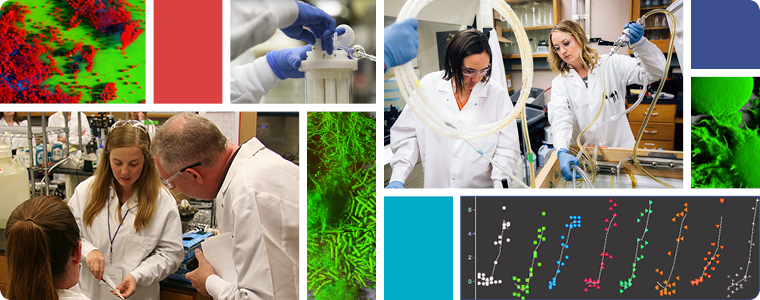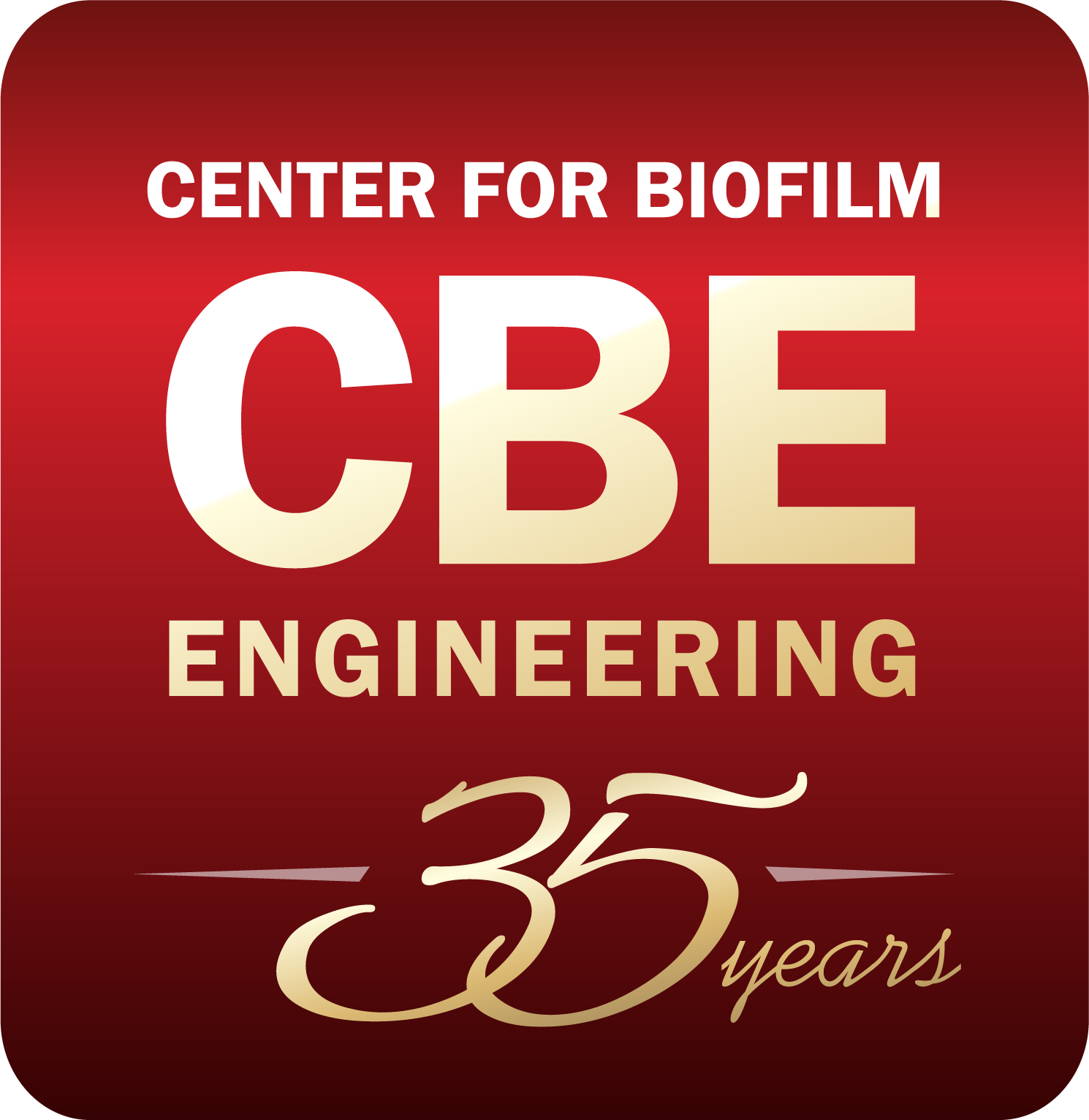Standardized Biofilm Methods Laboratory (SBML)
The Standardized Biofilm Methods Laboratory at the Center for Biofilm Engineering is made up of a team of engineers, microbiologists, and a biostatistician who work together to develop and standardize methods for growing, treating, sampling, and analyzing biofilm bacteria.
Mission & Goal
The SBML is dedicated to the creation, establishment, and transfer of quantitative biofilm methods for the benefit of academia, government, and industry. Our goal is design, build, and test laboratory reactors that incorporate the relevant engineering specifications of field systems to recreate a growth environment for predicting the efficacy of biofilm control strategies.
A Biofilm Methods Lab
The SBML was created to meet research, industry, and regulatory agency needs for standard analytical methods necessary for the development and regulatory acceptance of novel biofilm control technologies. In this role, the SBML has facilitated the acceptance of six biofilm methods that have been approved by the American Society for Testing and Materials International (ASTM). Those methods are:
E3321 Intraluminal catheter model used to evaluate antimicrobial urinary catheters
for prevention of E. coli biofilm growth (2021)
E2871 Single Tube Method (2012)
E2799 MBECTM Assay Method (2011)
E2647 Drip Flow Biofilm Reactor® Method (2008)
E2562 CDC Biofilm Reactor® Method (2007)
E2196 Rotating Disk Reactor Method (2002)
A Biofilm Testing Lab
In addition to research on standard biofilm methods, the SBML conducts experiments and develops testing protocols to support our industrial partners in advancing innovative solutions to biofilm problems in a variety of environments. These include: testing hard surface disinfectants for use in hospitals and long-term care facilities as well as solutions to biofilm problems associated with homes, businesses, recreational water, oil fields, textiles, beer draught systems, and manufacturing plants. SBML team members’ areas of expertise includes:
- Design of reactor systems to simulate industrial/medical systems
- Growing biofilm and quantifying cell numbers and activity
- Efficacy testing of biocides, treated surfaces and combination products
- Identifying chemical constituents in biofilms
- Experimental design and statistical analysis
- Biofilm staining techniques, microscopy and quantitative and qualitative image analysis of biofilms
Technology Transfer
Technology transfer is a fundamental part of the SBML mission. In addition to publishing academic papers and speaking at conferences, the SBML participates in ASTM International Committee E35 “Pesticides, Antimicrobials, and Alternative Control Agents.” The SBML has a series of Knowledge Sharing Articles that explain the statistical principles related to biofilm and antimicrobial methods and has created on-line training videos that demonstrate how to grow biofilm in the CDC and Drip Flow Biofilm reactors. The SBML also offers hands-on biofilm workshops that are based on the standard methods.
Team
Kelli Buckingham-Meyer, Microbiologist
Darla Goeres, Research Professor of Regulatory Science
Chris Jones, Research Professor of Biofilm Science & Technology
Lindsey Miller, Microbiologist
Al Parker, Biostatistician
Related Links
About CBE Testing Labs (pdf)
International Standards Task Group
Contact:
Dr. Chris Jones
Research Professor of Biofilm Science & Technology


